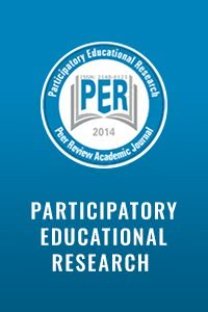Arts and Crafts Teacher Candidates’ Visual Literacy Skills
In the world today, which is intertwined with visuals, the
importance of communication skills with visuals are increasing day by day.
Visual literacy is necessity for deeper communication with visuals. This
necessity is more essential for the areas, which are intertwined with visuals.
That's why this research was aimed to describe how was the visual literacy
skills of the students studying in Department of Fine Arts Education who were
candidate for being teacher. The sample
size of this qualitative research was 140 (91 man, 49 woman) students who were
studying at first and final classes of State Universities of Turkey, Faculty of
Education Fine Arts Education Department. Data Gathering tool, which was
developed by the researcher, consist of nine open-ended questions and class
levels, genders and region of the universities of the teacher candidates were
asked for demographic characteristics. Content analysis was used to analyze the
gathered data. After the analysis, the data was coded in two groups. First group
called “Visual Reading Classification”; “Accessing the Visual”, “Visual Codes”,
“Analyzing the Visual”, “Interpreting the Visual”, “Evaluation of the Visual”
and second group called “Visual Writing Classification”; “Prefers to Sketch”,
“Prefers to Write”. And sub headings about the data were given inside. In the
light of these codes data were examined. It is observed that responds of the
teacher candidate students mostly did not correspond to the answers of the
questions. There were no distinctive differences among classes’ levels of the
students in terms of their visual literacy levels. This was concluded due to
the absence of visual literacy or related lectures in the departments of visual
arts. Thus, the alternative solutions for this issue and increasing visual
literacy levels of the students were recommended.
___
- AKYOL, H. (2012) Yeni Programa Uygun Türkçe Öğretim Yöntemleri, Ankara: Pegema Yayıncılık.
- ARSLAN, H. (2012) Gelecekçi Sanat Eğitimi Modellerine Temel Oluşturması Bakımından Görsel Okuryazarlık ve Eleştirel Pedagoji İlişkisi, Phd Thesis.
- AUSBURN, L. J., & AUSBURN, F. B. (1978) Cognitive styles: some information and implications for instructional design. The Journal of ECT, 26.4, pp, 337-354.
- AVGERINOU, M. & PETERSON, R. (2011) Toward a cohesive theory of visual literacy. Journal of Visual Literacy, 30.2, pp. 1-19.
- AVGERINOU, M. & ERICSON, J. (1997) A review of the consept of visual literacy. British Journal of Educational Tecnology, 28.4, pp, 280-291.
- BARRET,T., (Trans.) HARCANOĞLU, Y. (2012) Fotoğrafı Eleştirmek; İmgeleri Anlamaya Giriş, İstanbul: Hayalperest Yayınevi.
- BRILL, M. J., KIM, D. & BRANCH, M.,R. (2007) Visual literacy defined - the results of a delphi study, can IVLA (operationally) define visual literacy?. Journal of Visual Literacy. Vol.27, pp, 47-60.
- BUEHL, D. (2014) Classroom Strategies for Interactive Learning, New Jersey: International Reading Association, 4th Edition.
- ROSE, G. (2003) Visual Methodologies, London, SAGE Publications ltd., British Library Cataloguing in Publication Data.
- Simons, T. (2000) Multimedya or Bust?, (Research by Dr. Hayward Andres and Dr. Cancade Peterson), Presentations 7.
- Snavely, L. Columnıst, G. (2005) Visual Images and Information Literacy, Reference and User Services Quarterly, American Library Association, Vol.45 (1).
- STOKES, S. (2002) Visual literacy in teaching and learning: a literature perspective. Electronic Journal for the Integration of Technology in Education, 1.1, pp, 10-19.
- UÇAR, Ö., UÇAR T., KILIÇ, L., ORHON, N. & TAŞÇIOĞLU M. (2011) Görsel Kültür, Eskişehir, Anadolu Üniversitesi Açık Öğretim Yayınları.
- ISSN: 2148-6123
- Yayın Aralığı: Yılda 6 Sayı
- Başlangıç: 2014
- Yayıncı: Özgen KORKMAZ
